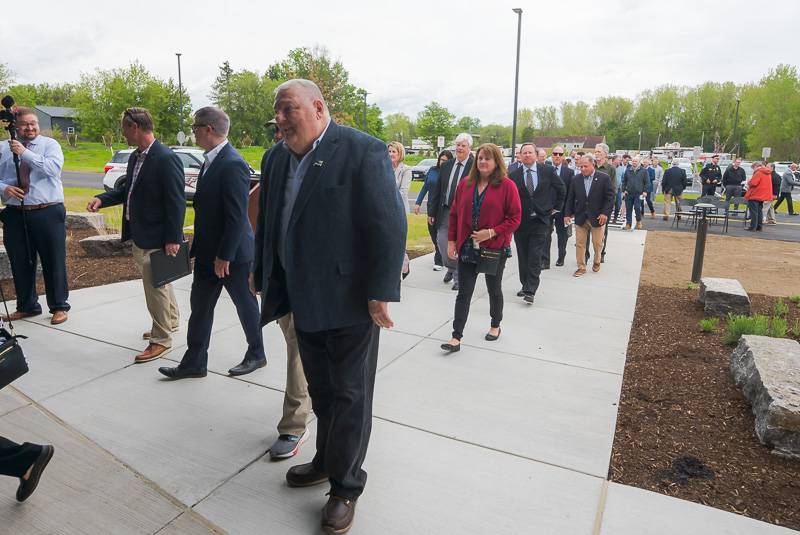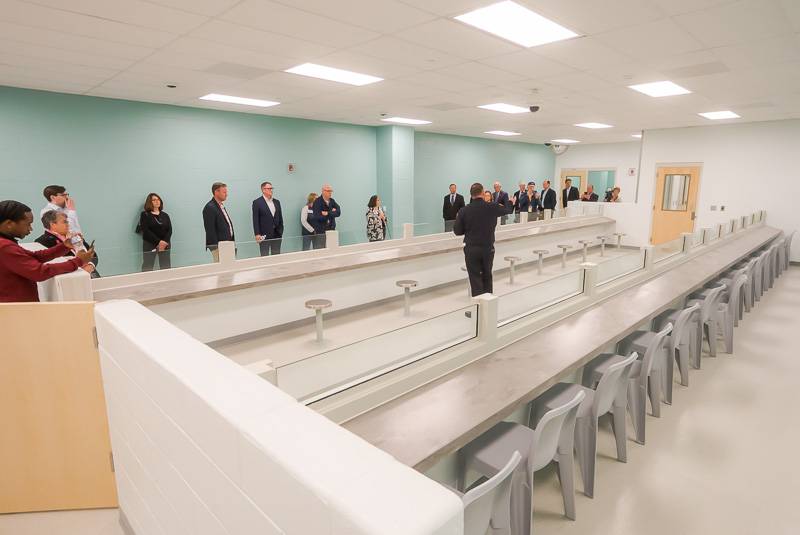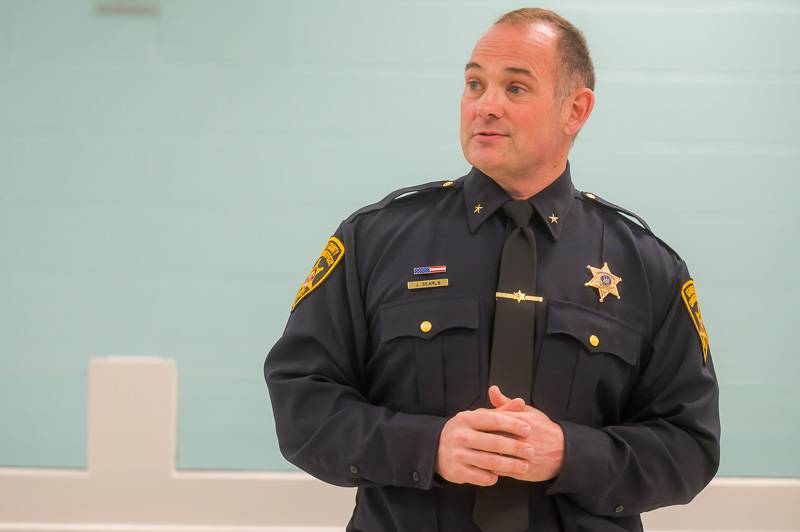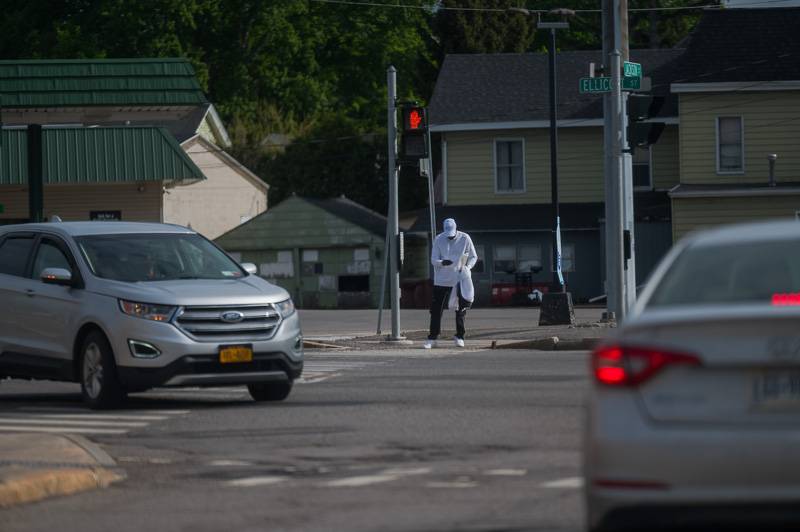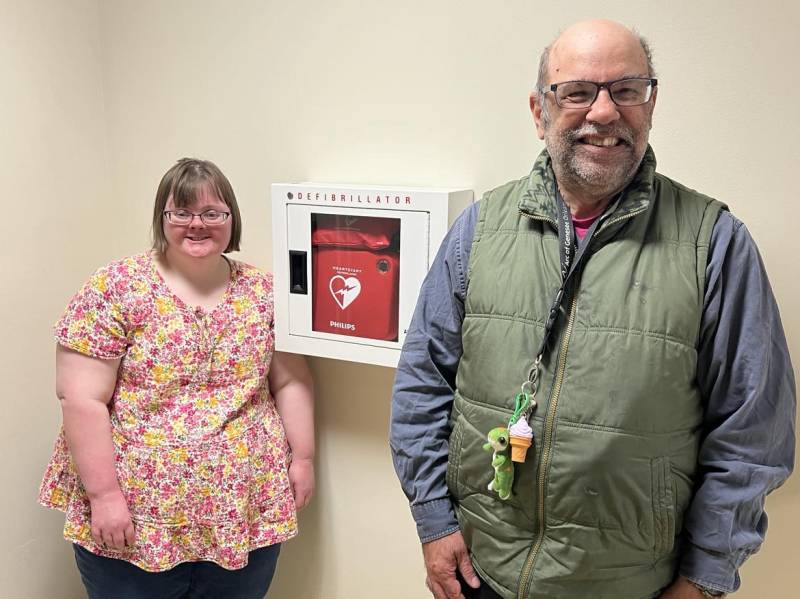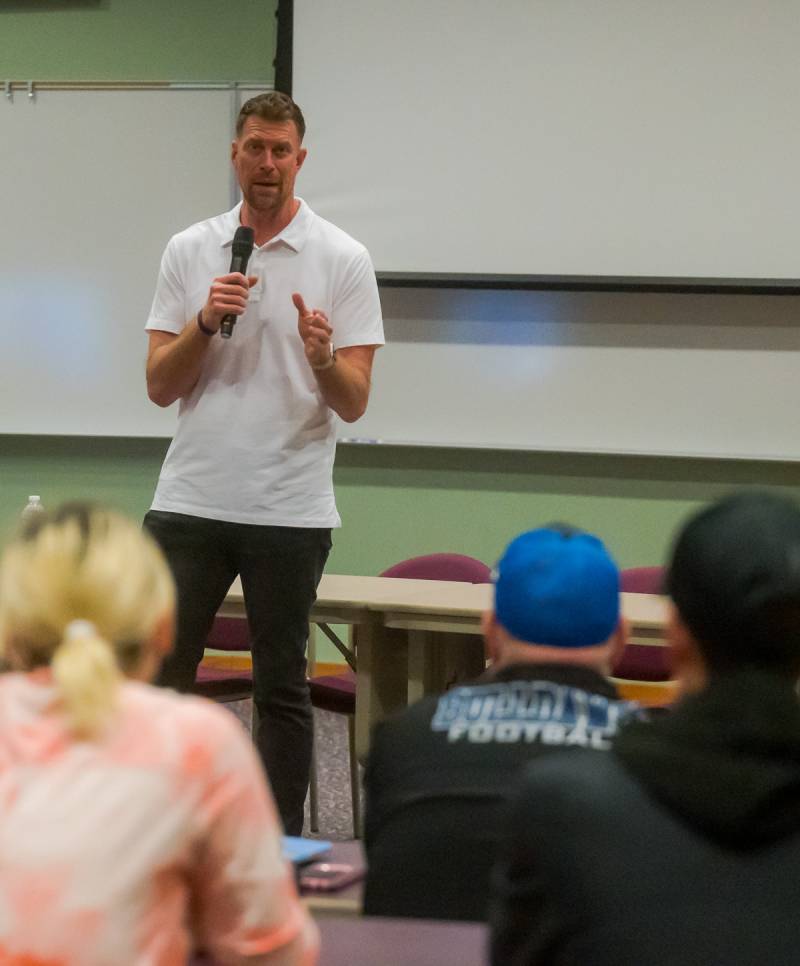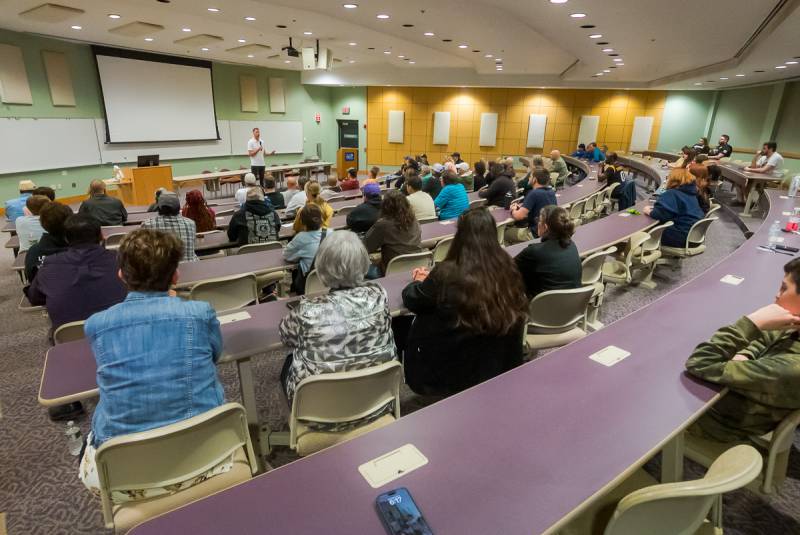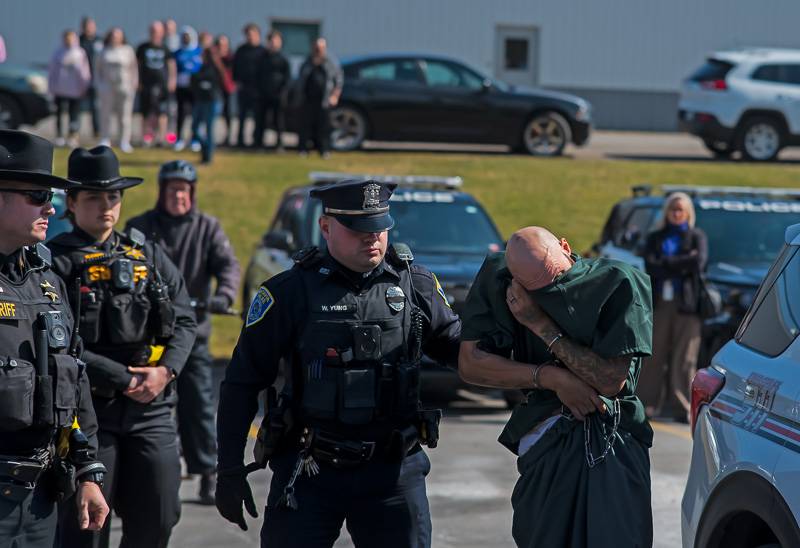County dedicates new jail that officials expect to serve community for at least a century

Photo by Howard Owens.
Last month, Genesee County experienced a total solar eclipse, a once-in-a-lifetime event for many.
On Friday, Sheriff William Sheron said it was a once-in-a-lifetime event: the dedication of a new county jail.
The jail is expected to be the county's lone place of inmate incarceration for at least 10 decades.
"We'll never see one of these built again, nor do we want to," Sheron said.
The new jail's construction was a long journey, Sheron said, but a necessary one. The new facility will serve the community better, providing greater opportunities to help offenders improve their lives and keep corrections officers safer.
"Today marks a significant milestone in our county's journey towards justice and rehabilitation," Sheron said. "It's with great pride and humility that we gather here to dedicate the new Genesee County Jail. This facility is not just a testament to our commitment to public safety but also a symbol of our unwavering dedication to accountability, rehabilitation and hope."
See also: Photos: Tour of the new Genesee County Jail
Sheron noted that incarceration is not the ultimate goal of local law enforcement.
"Rather, it's a means to an end, an opportunity for individuals to reflect on their actions, take accountability for their actions and their mistakes and embark on a path towards positive change," Sheron said.
To that end, the new jail will offer better access to mental health assistance, educational opportunities, and access to counseling. Inmates will have access to resources and programs aimed at addressing the root causes of their behavior with the hope of guiding them toward a more productive future.
"Accountability is the heart of the justice system," Sheron said. "It's about holding individuals responsible for their actions and also providing them with the support and the tools they need to reintegrate into our society as productive and law-abiding citizens."
Allen Riley, chairman of the state's Commission of Corrections, which mandated that the county build a new jail to replace its deteriorating, aging facility Main Street in Batavia, which was becoming costly to maintain, he said, praised the new facility.
"It will provide greater space for enhanced educational opportunities for the incarcerated population, which will provide opportunities for advancement and a chance to become a productive member of society upon their release and reduce recidivism rates here in Genesee County," he said.
The 184-bed facility was built at a cost of $70 million. The jail is divided into four units. To start, only three units will house inmates: two males and one female. It's the first time Genesee County will house its own female inmates.
Assistant Jail Superintendent Jeff Searls told visitors during a guided tour that he anticipates opportunities to house inmates from other counties, especially for a couple of neighboring counties that are just starting the process of building new jails in their communities and providing custodial care for people being held for the U.S. Marshall's and Homeland Security. Holding inmates for other jurisdictions will generate revenue for the county, which will help offset the jail's cost.
County Manager Matt Landers noted that the jail was built during challenging times. Project planning began in 2017 and by the time the county was ready to begin construction, the world was hit by a pandemic, then rising interest rates, followed by inflation, along with bail reform.
"At one point, I was wondering if we're building this jail too small," Landers said. "If you go back to 2019, we had 140 individuals in the care of Genesee County Sheriff's Office that would essentially be full today. Then, within one year, the numbers dropped from the pandemic and from the bail reform. And we weren't quite sure. So, we commissioned a second jail-needs study. And the results of that study were basically to keep the same number we had before. And now here we are today with, I would say, an appropriate size jail facility for the next 100 years."
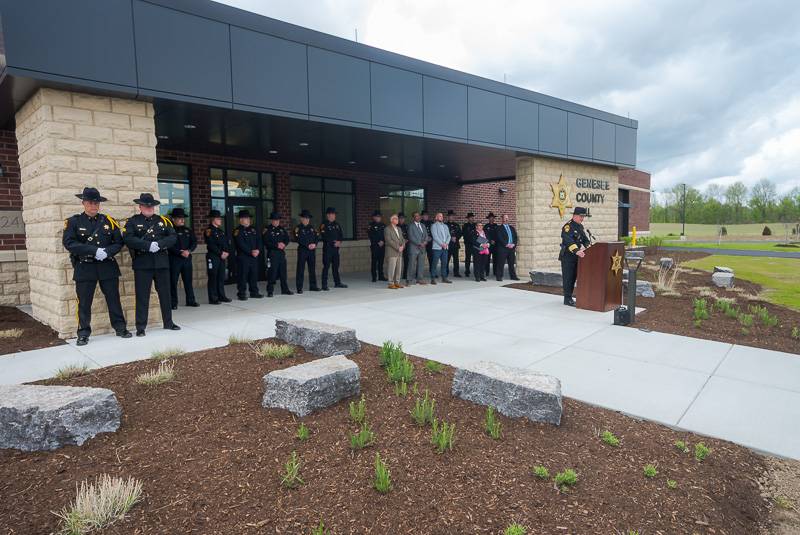


Photo by Howard Owens.
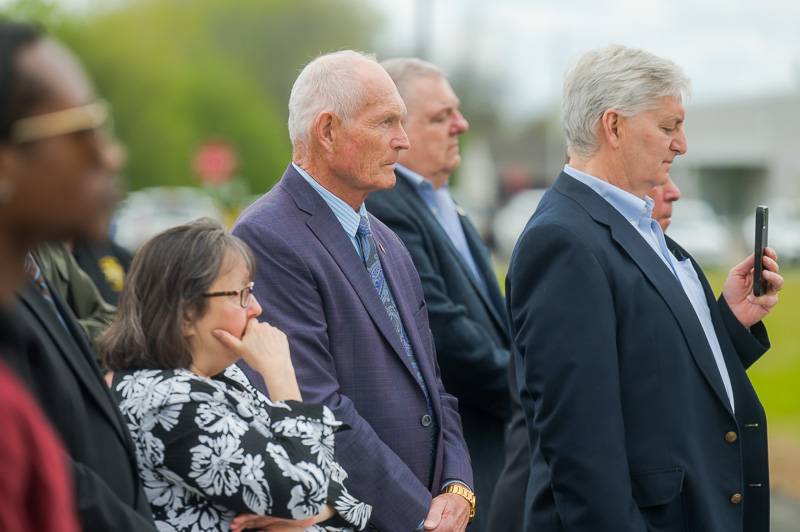
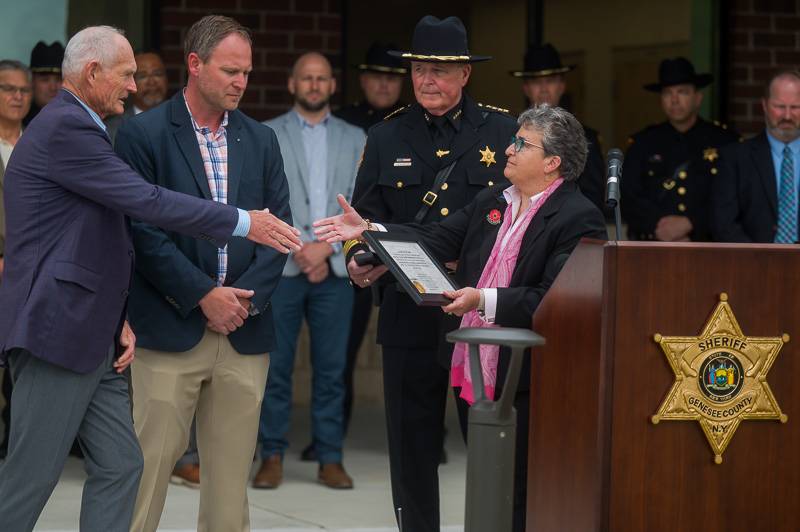
Photo by Howard Owens.

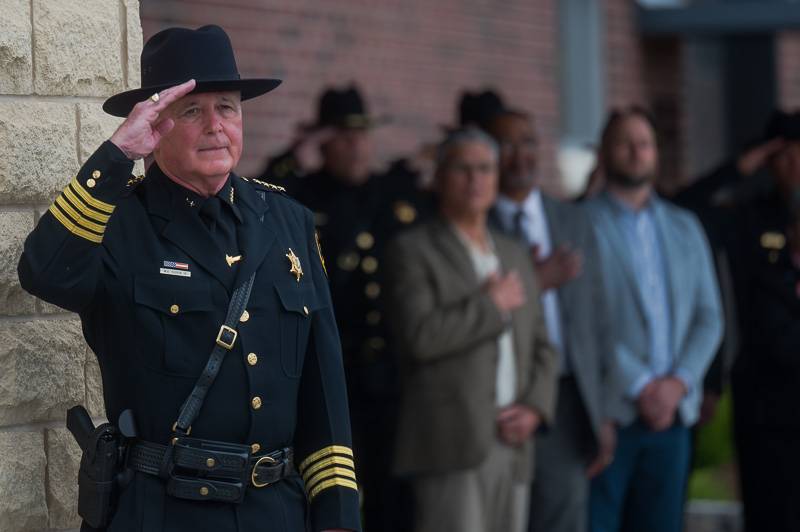


Photo by Howard Owens.

